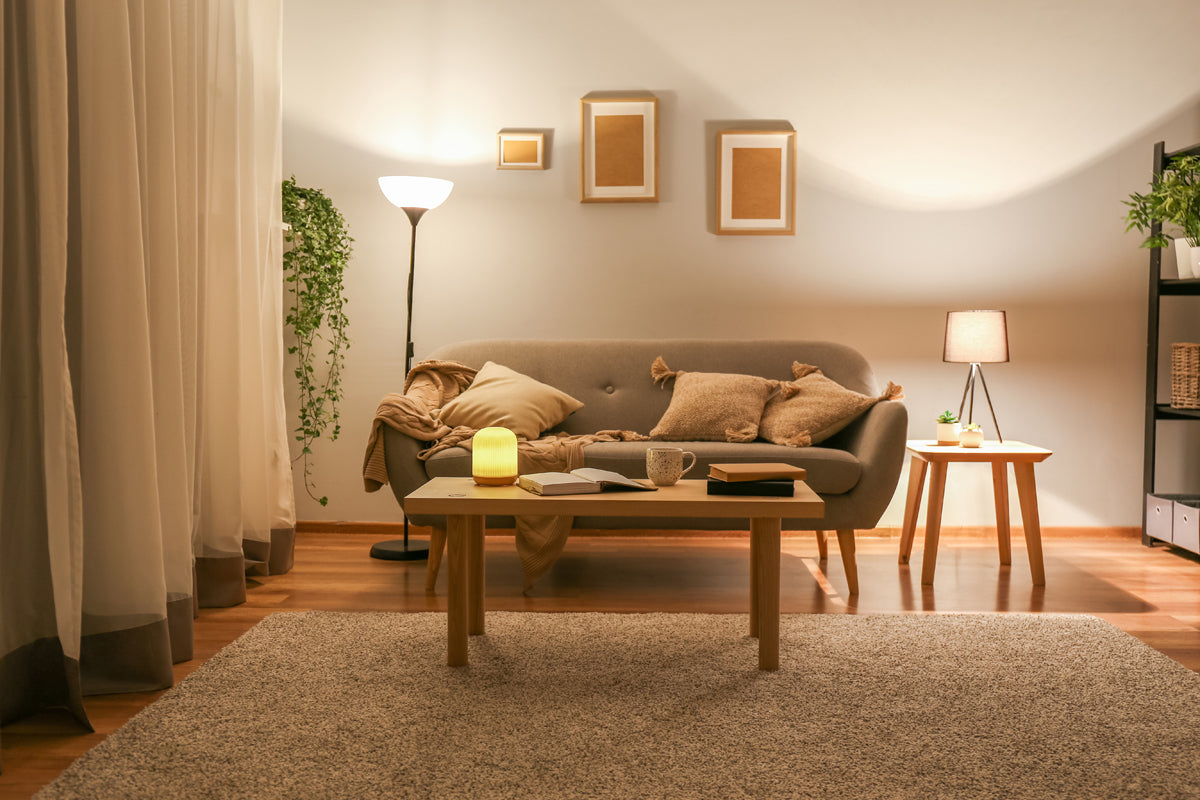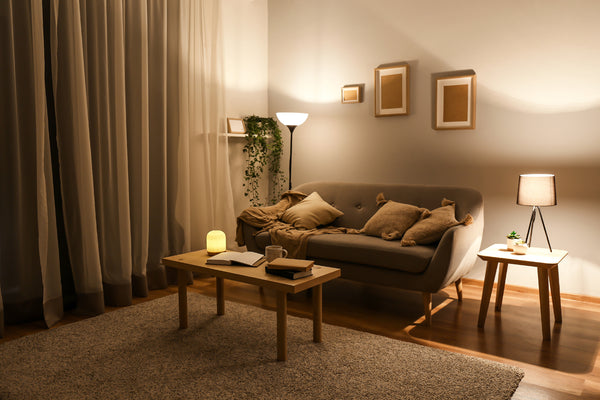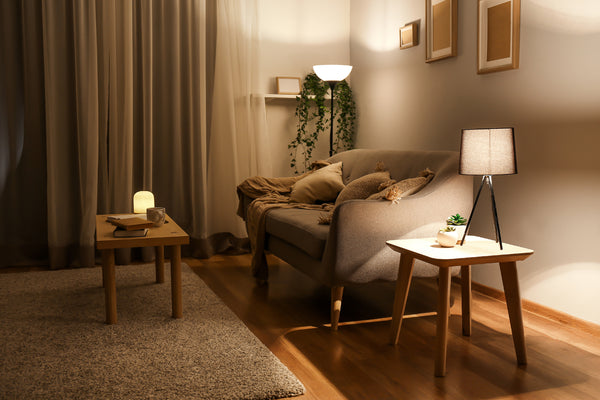On orders $99+
On orders $99+

Start by utilizing floor lamps to provide ambient lighting; their height and positioning can mimic overhead light. Add table lamps and wall sconces for task lighting, ensuring areas like reading nooks or workspaces are well-lit. Use accent lights, such as picture lights or LED strips, to highlight artwork, architectural features, or bookshelves, adding depth and character to the space. Maximizing natural light during the day through windows also plays a crucial role in illuminating the room. By strategically placing these various light sources and experimenting with their arrangements, you can achieve a balanced, layered lighting scheme that brings comfort and functionality to spaces without ceiling lights.
Lighting a room without ceiling lights presents a creative challenge that, when approached thoughtfully, can lead to an array of innovative and stylish lighting solutions. This constraint often leads to more intimate and personalized spaces, as you move beyond traditional overhead lighting to explore the depths and nuances of ambient, task, and accent lighting through alternative sources.

Embracing Layers of Light
The key to effectively lighting a room without ceiling fixtures lies in layering different types of light. Start with ambient lighting to establish the base layer of illumination. Floor lamps, particularly those with a torchiere design that directs light upward, can mimic the diffuse glow of overhead lighting. Positioning these lamps in corners can help spread light across the room, softening shadows and creating a welcoming atmosphere.
Next, incorporate task lighting to address specific activities within the space. Desk lamps, table lamps, or adjustable floor lamps can provide focused light for reading, working, or other detailed tasks. These fixtures not only serve a functional purpose but also add to the room's decor, allowing for personalized touches that reflect your style.
Accent lighting offers an opportunity to highlight architectural features, artwork, or key decor elements, adding depth and dimension to the room. Wall-mounted sconces, picture lights, or even strategically placed table lamps can draw attention to these features, enriching the overall aesthetic of the space.
Utilizing Natural Light
Maximizing natural light can significantly enhance a room's ambiance, especially during daytime hours. Sheer curtains or adjustable window treatments allow you to control the amount of daylight entering the room, using it to naturally brighten the space. Mirrors strategically placed opposite windows can amplify light, making the room feel larger and more open.
Innovative Lighting Solutions
For rooms where electrical outlets are limited, battery-operated LED lights offer a versatile solution. These can be installed under cabinets, along bookshelves, or in other strategic locations to provide localized lighting without the need for wiring. Rechargeable LED lamps can also be moved around as needed, offering flexibility in lighting design.
String lights or LED strip lights can create a warm, inviting glow, perfect for creating a cozy atmosphere. These can be draped along a mantle, around a window, or behind a headboard for a soft, decorative accent that illuminates the room in a unique way.
Choosing the Right Fixtures
When embarking on the journey of illuminating a room without the use of ceiling lights, selecting the right fixtures becomes an essential part of crafting the desired ambiance and functionality of your space. This task involves more than just picking lamps that fit your style; it’s about understanding how different lighting solutions can create a layered and harmonious environment that caters to your needs and enhances the room's aesthetic.
Consider Functionality and Form
Begin by assessing the primary activities that take place in the room. For reading or intricate tasks, articulated arm lamps or adjustable floor lamps can direct light precisely where it's needed, combining functionality with an opportunity to introduce sleek, modern designs or vintage-inspired classics into your space. For general ambiance, globe lamps or fixtures with fabric shades can diffuse light softly, creating a warm and inviting atmosphere that's perfect for relaxing or entertaining.
Harmonize with Your Decor
The design of the fixtures you choose should complement the room's overall decor scheme. For minimalist interiors, consider clean-lined lamps in monochromatic tones that reinforce the space's modern aesthetic. In contrast, rooms with a bohemian or eclectic style might benefit from unique, artisanal pieces that add texture and color, such as ceramic table lamps or hand-woven pendant lights that can be placed on hooks to mimic the effect of a ceiling fixture.
Balancing Scale and Proportion
Consider the scale of the lighting fixtures in relation to the room's size and furniture. A large, statement-making floor lamp can serve as a focal point in a spacious living room, while a petite, elegant table lamp might be more appropriate on a small bedside table. The key is to maintain balance and proportion, ensuring that the fixtures enhance rather than overwhelm the space.
By thoughtfully considering the function, form, material, color, and scale of your lighting fixtures, you can create a layered and cohesive lighting scheme that illuminates your space beautifully, even without the presence of ceiling lights. Each fixture not only serves a purpose but also contributes to the narrative of your home's design, making the room as visually compelling as it is comfortably lit.

Light Bulb Considerations
The choice of light bulbs can also dramatically affect the atmosphere of the room. Warmer-toned bulbs (2700K to 3000K) create a cozy and inviting feel, perfect for living rooms or bedrooms where relaxation is key. Cooler-toned bulbs (3500K and above), on the other hand, mimic the clarity of natural daylight, making them ideal for spaces where tasks are performed, like reading areas or home offices.
Conclusion
Lighting a room without ceiling lights is an opportunity to get creative with your lighting choices, exploring a mix of floor lamps, table lamps, wall sconces, and natural light to achieve a layered, inviting space. By considering the function of each area within the room and selecting fixtures that complement your decor, you can create a beautifully lit environment that feels both welcoming and functional. This approach not only solves the practical challenge of illumination but also allows you to express your personal style, transforming the space into a reflection of your tastes and preferences.
Helpful Links:
Comments
Leave a comment